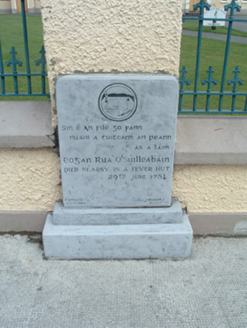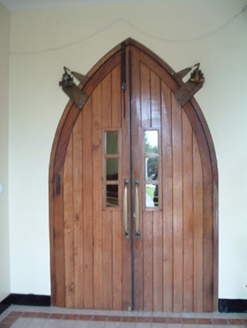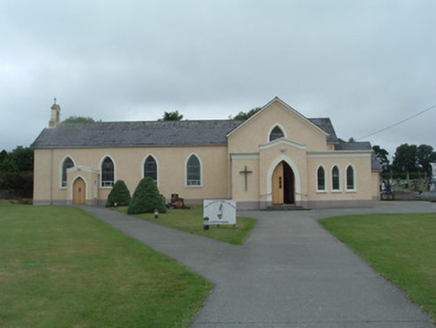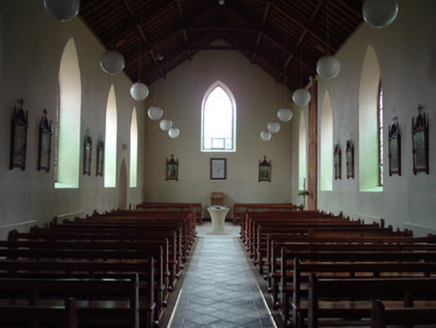Survey Data
Reg No
20902901
Rating
Regional
Categories of Special Interest
Architectural, Social
Original Use
Church/chapel
In Use As
Church/chapel
Date
1810 - 1830
Coordinates
117463, 97473
Date Recorded
17/08/2006
Date Updated
--/--/--
Description
Freestanding cruciform-plan Roman Catholic church, built c. 1820, facing west and comprising four-bay nave with shallow chancel, flat-roofed porch to south with projecting entrance, lower pitched sacristy to east, and gabled porches to south wall of nave and to north gable of north transept. Pitched slate roofs. Painted roughcast rendered walls having smooth render plinth course. Pointed arch rendered openwork bellcote to west gable having iron cross finial. Pointed window openings to nave and main porch, having render surrounds and sills and stained glass. Square-headed window openings having two-over-two pane timber sliding sash windows to sacristy. Pointed arch door openings with render surrounds having timber battened double-leaf doors, main door having concrete steps to front. Inner porch door having brass fittings. Ceiling comprising exposed A-frame roof. Interior has painted rendered walls, with marble altar to east end, marble baptismal font to west end, and timber Stations of the Cross. Graveyard adjacent to west having some ornate grave markers. Painted roughcast rendered rectangular elevation piers and having cast-iron gates and railings, with limestone plaque to local poet against rendered boundary wall.
Appraisal
This church is a fine example of the incorporation of the Gothic Revival style into local architecture. The building hints at dramatic Gothic architecture through the use of lancet openings and the open bellcote while maintaining a restrained and sedate façade. The internally exposed roof beams reflect the penchant for displaying carpentry seen in larger churches while retaining simplicity more suitable to a rural village. The building is a manifestation of the emerging confidence of the Roman Catholic Church in early nineteenth-century Ireland. It is a key landmark in the village of Knocknagree and forms an imposing backdrop to the village green.







